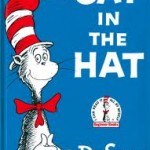With Banned Book Week (September 24-October1) approaching, I find myself thinking about the benefits of subversive thinkers. Some of our most cherished authors have been rebels who railed against the norms of their day. Most notably in the field of children’s literature, Maurice Sendak, Dr. Seuss and Shel Silverstein come to mind.
They all wrote bestselling children’s stories and they all have new books coming out soon, but the secret to their success is that their writing was once considered inappropriate for children! Once upon a more staid time, the purpose of children’s books was to model good behavior. They were meant to edify and to encourage young readers to be what parents wanted them to be, and the children in their pages were well behaved, properly attired and devoid of tears. Children’s literature was not supposed to shine a light on the way children actually were, or delight in the slovenly, self-interested and disobedient side of their natures. Seuss, Sendak and Silverstein ignored these rules. They brought a shock of subversion to the genre — defying the notion that children’s books shouldn’t be scary, silly or sophisticated. Rather than reprimand the wayward listener, their books encouraged bad (or perhaps just human) behavior. Not surprisingly, Silverstein and Sendak shared the same longtime editor, Ursula Nordstrom of Harper & Row, a woman who once declared it her mission to publish “good books for bad children.” http://www.nytimes.com/2011/09/18/books/review/the-childrens-authors-who-broke-the-rules.html?_r=2




